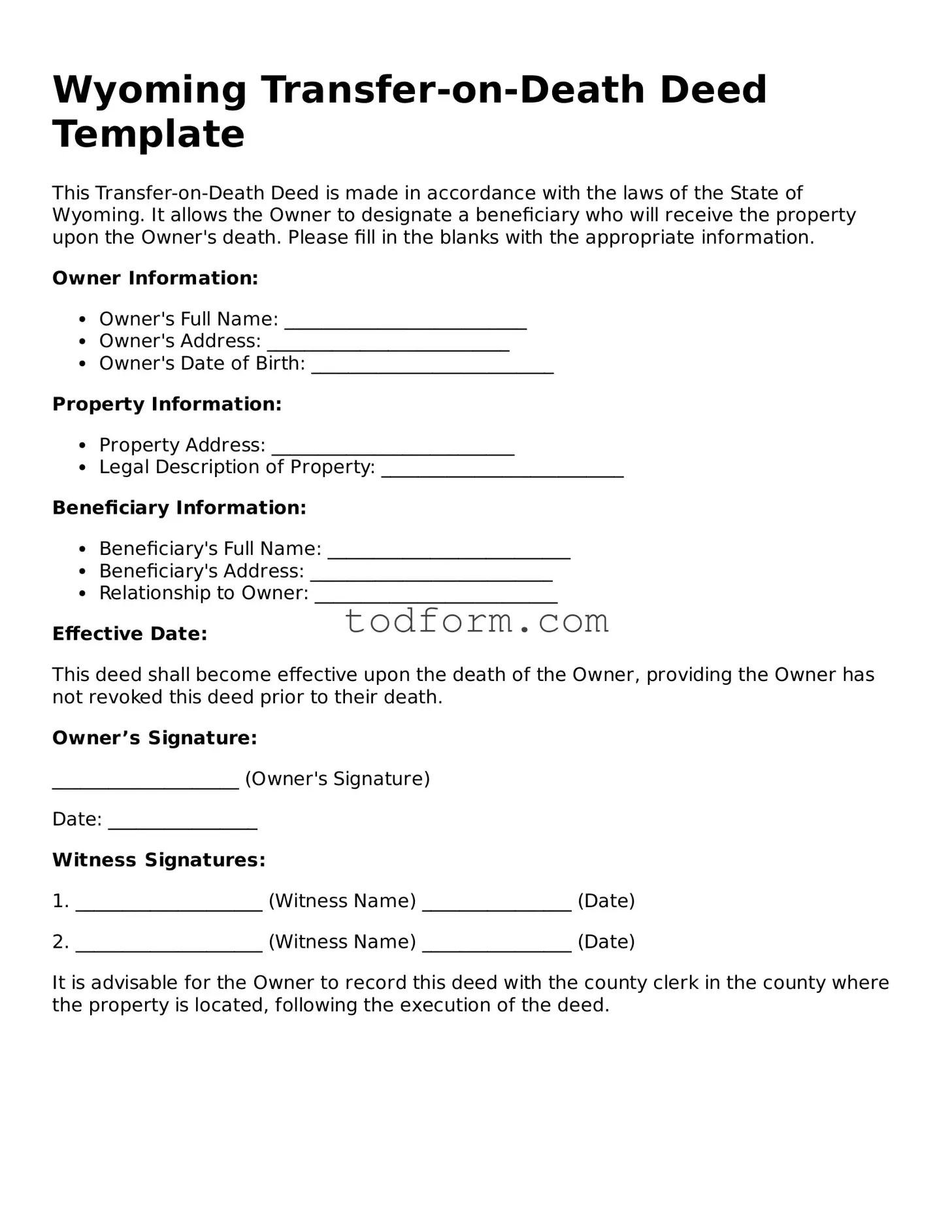The Wyoming Transfer-on-Death Deed (TODD) is similar to a Last Will and Testament in that both documents are designed to facilitate the transfer of property upon the death of the owner. A Last Will specifies how assets should be distributed and allows for the appointment of an executor to carry out the deceased's wishes. However, the TODD operates outside of probate, allowing for a more streamlined transfer process, which can be beneficial for the heirs by avoiding potential delays and costs associated with probate proceedings.
Another document that shares similarities with the Wyoming TODD is the Revocable Living Trust. Like the TODD, a Revocable Living Trust allows property to be transferred outside of probate. The property placed in the trust can be managed during the grantor's lifetime and distributed upon their death according to the terms of the trust. This can provide greater privacy and control over asset distribution compared to a will or TODD, as the trust does not become public record.
The Beneficiary Designation form is also comparable to the TODD. This document is commonly used for financial accounts, such as life insurance policies or retirement accounts, allowing the account holder to designate a beneficiary who will receive the assets directly upon their death. Similar to the TODD, the transfer occurs outside of probate, ensuring a faster and more efficient transfer of assets to the named beneficiary.
A Joint Tenancy with Right of Survivorship agreement shares characteristics with the TODD, as it allows for property to pass directly to the surviving owner upon the death of one owner. This arrangement can simplify the transfer process and avoid probate, much like the TODD. However, joint tenancy requires both owners to hold the property together during their lifetimes, while the TODD allows for a single owner to designate a beneficiary without sharing ownership.
The Life Estate Deed is another document that bears resemblance to the TODD. A Life Estate Deed allows an individual to retain the right to live in and use a property for their lifetime, while designating a remainder beneficiary who will receive the property upon the individual's death. This arrangement can provide similar benefits as the TODD in terms of avoiding probate and ensuring a clear transfer of property, although the life estate retains some rights for the original owner during their lifetime.
The Power of Attorney (POA) is a document that, while primarily used for granting authority to another person to act on one’s behalf, can also facilitate the transfer of assets. A durable POA can allow an agent to manage a person's property and make decisions regarding it while they are still alive. However, unlike the TODD, the POA does not automatically transfer property upon death; instead, it ceases to be effective, which means the TODD provides a more definitive plan for asset transfer after death.
Lastly, the Affidavit of Heirship can be seen as similar to the TODD in the context of property transfer after death. This document serves to establish the heirs of a deceased individual, particularly in situations where there is no will. While the Affidavit of Heirship may be used to facilitate the transfer of property, it often requires probate proceedings to be initiated, making the TODD a more efficient option for those wishing to avoid such processes.
